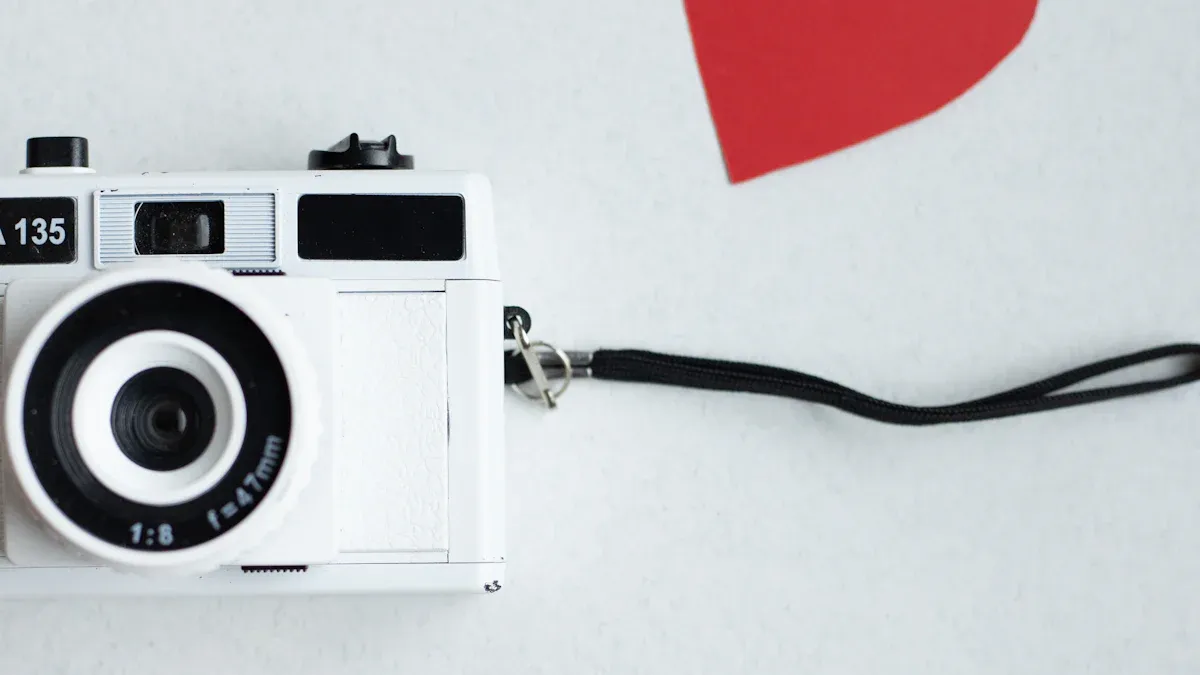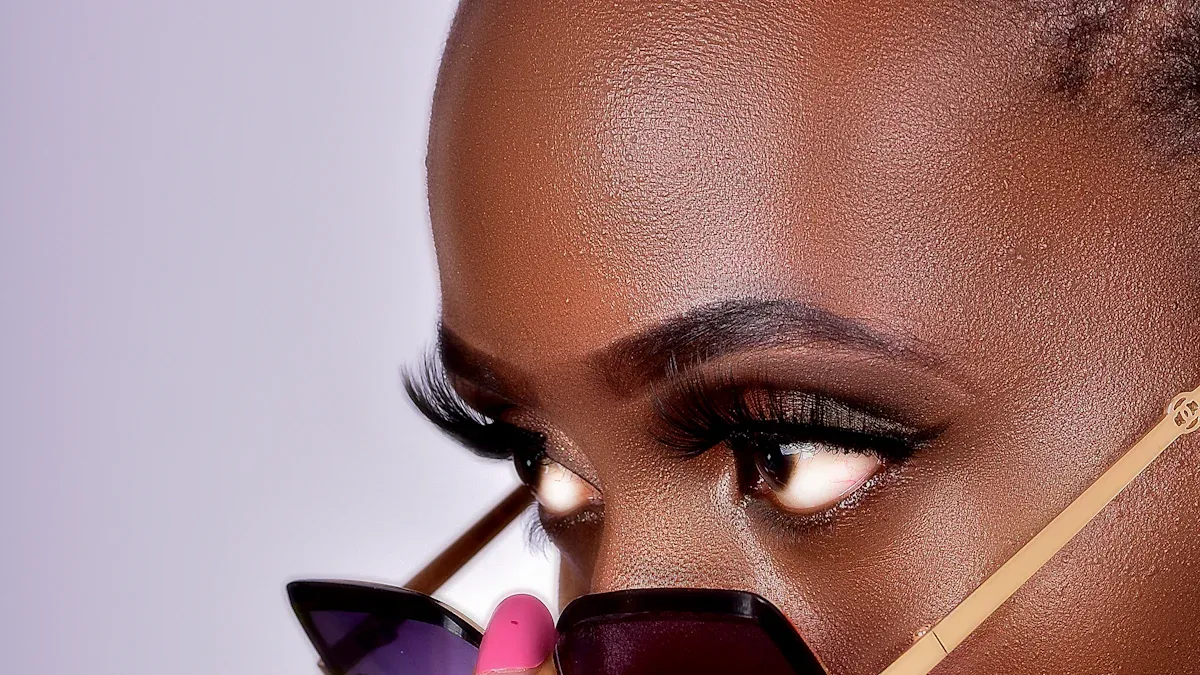How to Protect Your Helius Flashlight Lens from Scratches and Cracks

Your helius flashlight lens deserves proper care to maintain its performance. Scratches or cracks can reduce its efficiency and lifespan. Simple steps can provide effective protection. Handle it carefully and avoid unnecessary risks. A well-maintained flashlight ensures reliability during critical moments. Prioritize its safety to avoid costly replacements.
Key Takeaways
Be gentle with your flashlight to avoid drops or hits. Use a case or strap when taking it outside.
Add protection like a metal ring or plastic cover to keep the lens safe from scratches and damage.
Clean the lens often with a soft cloth. Don’t use strong chemicals. Check it regularly for dirt or cracks to keep it working well.
Proper Handling Techniques
Avoid Dropping or Bumping the Flashlight
Accidental drops or bumps can cause significant damage to your flashlight lens. To prevent this, always handle your flashlight with care. Avoid shaking it unnecessarily, as this can harm internal components. When not in use, place it on a stable surface to reduce the risk of it falling. If you’re carrying it outdoors, secure it in a protective case or attach it to a lanyard for added safety. These simple steps can go a long way in ensuring the protection of your helius flashlight.
Hold the Flashlight Securely During Use
A firm grip is essential when using your flashlight. To prevent accidental slips, consider using a flashlight with a textured or anti-slip surface. If your flashlight has a lockout mode, activate it to avoid accidental activation, which could lead to damage. Alternatively, loosening the tail cap can serve the same purpose if no lockout mode is available. Follow these best practices:
Avoid dropping or shaking the flashlight during use.
Select the correct light mode to prevent unnecessary strain on its components.
Recharge the flashlight according to the manufacturer’s guidelines to maintain its performance.
By holding your flashlight securely and following these tips, you can minimize the risk of damage.
Keep the Lens Away from Abrasive Surfaces
The lens is one of the most vulnerable parts of your flashlight. To protect it, avoid placing the flashlight lens-down on rough or abrasive surfaces. This can lead to scratches that impair its performance. When setting it down, ensure the lens is elevated or covered. Using a polycarbonate cover or a stainless steel crenelated ring can provide additional protection. These accessories act as a barrier, shielding the lens from direct contact with harmful surfaces. Prioritizing these precautions will help maintain the clarity and durability of your flashlight lens.
Protective Accessories for Helius Flashlight

Use a Stainless Steel Crenelated Ring
A stainless steel crenelated ring offers excellent protection for your flashlight lens. This accessory acts as a barrier, shielding the lens from direct impact during accidental drops. It also prevents scratches when you place the flashlight on rough surfaces. You can easily attach the ring to the head of your helius flashlight. Its durable material enhances flashlight durability, ensuring long-term use. This simple addition not only protects the lens but also adds a layer of ruggedness to your flashlight.
Attach a Polycarbonate Cover to the Lens
A polycarbonate cover is another effective way to safeguard your flashlight lens. This lightweight yet sturdy material resists scratches and absorbs minor impacts. You can attach it directly to the lens, creating a protective shield without affecting the light output. Polycarbonate covers are affordable and easy to replace, making them a practical choice for maintaining your flashlight's performance. By using this accessory, you ensure the lens stays clear and functional, even in challenging environments.
Invest in a Durable Protective Case
A durable protective case is essential for storing and transporting your flashlight. It provides all-around protection, keeping the lens safe from scratches, cracks, and dirt. Look for a case with a snug fit and shock-absorbing padding. This ensures the flashlight remains secure during travel or storage. A high-quality case also protects against moisture and dust, further extending the flashlight's lifespan. Investing in a protective case is a smart way to enhance flashlight durability and maintain its reliability.
Tip: Combine these accessories for maximum protection. A crenelated ring, polycarbonate cover, and protective case work together to keep your helius flashlight in top condition.
Cleaning and Maintenance for Flashlight Lens

Use a Soft, Non-Abrasive Cloth for Cleaning
Keeping your flashlight lens clean ensures optimal performance. Use a soft, non-abrasive cloth to avoid scratching the surface. Microfiber cloths work best for this purpose. They effectively lift dirt and grime without causing damage. Avoid using paper towels or rough fabrics, as they can leave scratches. Gently wipe the lens in a circular motion to remove dust and smudges. Regular cleaning with the right material helps maintain the clarity of your flashlight lens and extends its durability.
Avoid Harsh Chemicals or Abrasive Cleaners
Harsh chemicals and abrasive cleaners can harm your flashlight lens. These substances may strip protective coatings or leave permanent marks. Stick to mild cleaning solutions, such as a mixture of water and a small amount of dish soap. Apply the solution to the microfiber cloth, not directly to the lens. This method ensures thorough cleaning without risking damage. Proper cleaning practices preserve the lens's integrity and contribute to the flashlight's overall durability.
Inspect the Lens Regularly for Dirt or Damage
Frequent inspections help you catch potential issues early. Check your flashlight lens for dirt, scratches, or cracks before and after use. Look for signs of wear that could affect its performance. If you notice minor scratches, address them promptly with a lens repair kit. Regular inspections not only maintain the lens's condition but also ensure the flashlight remains reliable when you need it most. This proactive approach enhances flashlight durability and provides long-term protection.
Storage Tips for Helius Flashlight
Store the Flashlight in a Safe, Dry Place
Proper storage is essential to maintain your flashlight's performance and extend its lifespan. Always store it in a safe, dry location to prevent moisture from affecting its internal components. Even if your flashlight is water-resistant, prolonged exposure to damp conditions can lead to corrosion or battery damage. Choose a spot away from potential hazards, such as water sources or areas prone to spills. A dry environment ensures the lens and circuitry remain in optimal condition, preserving the flashlight's durability.
Avoid Extreme Temperatures or Humidity
Extreme temperatures can harm your flashlight in several ways. High heat may warp plastic components or degrade the battery, while freezing temperatures can reduce battery efficiency. Sudden temperature changes can also cause condensation on the lens, leading to foggy optics that impair functionality. To avoid these issues, store your flashlight in a cool, stable environment. Humidity can be equally damaging, as it promotes condensation and corrosion. A controlled storage space helps protect your flashlight from these risks, ensuring it remains reliable when needed.
Use a Dedicated Storage Pouch or Case
A dedicated storage pouch or case provides an extra layer of protection for your flashlight. These accessories shield it from physical damage, such as scratches or cracks, and keep dust and debris away from the lens. Look for a case with shock-absorbing padding to safeguard against accidental drops. A snug fit ensures the flashlight stays secure during transport or storage. By using a protective case, you enhance flashlight durability and maintain its performance over time.
Tip: Combine proper storage practices with a protective case for maximum protection. This approach ensures your flashlight stays in top condition, ready for use whenever you need it.
What to Do If Damage Occurs to the Flashlight Lens
Assess the Extent of the Damage
When your flashlight lens sustains damage, start by examining it closely. Look for visible scratches, cracks, or chips. Minor scratches may only affect the lens surface, while deeper cracks can compromise the flashlight's performance. Check if the damage impacts the light output or allows dust and moisture to enter. A thorough assessment helps you decide whether to repair or replace the lens. Always prioritize maintaining the flashlight's functionality and protection against further harm.
Use a Lens Repair Kit for Minor Scratches
For minor scratches, a lens repair kit can restore your flashlight lens effectively. These kits typically include:
A buffing wheel that attaches to a drill or rotary tool.
Use these tools carefully to avoid over-polishing, which could worsen the damage. Follow the instructions provided with the kit for the best results. Repairing minor scratches not only improves the lens's clarity but also ensures the flashlight continues to perform optimally.
Replace the Lens if Necessary
If the damage is severe, replacing the lens becomes essential. A cracked or heavily scratched lens can scatter light, reducing brightness and clarity. It may also expose internal components to environmental factors, increasing the risk of malfunction. Replacing the lens restores the flashlight's efficiency and ensures safety during critical situations. Always choose a replacement lens compatible with your flashlight model to maintain its reliability and durability.
Tip: Regular maintenance and prompt repairs can prevent minor issues from escalating into costly replacements.
Protecting your helius flashlight lens is simple when you follow the right steps. Handle it carefully to avoid damage. Use protective accessories to shield the lens from harm. Clean it regularly with safe materials, and store it in a secure place. These actions ensure long-term protection and keep your flashlight reliable.
FAQ
How often should you clean your Helius flashlight lens?
You should clean the lens every two weeks or after heavy use. Regular cleaning prevents dirt buildup and ensures optimal light output.
Can you use any protective case for your flashlight?
No, always choose a case designed for your flashlight model. A snug fit and shock-absorbing padding provide the best protection.
What should you do if your flashlight lens fogs up?
Wipe the lens with a microfiber cloth. Store the flashlight in a dry, cool place to prevent condensation.
Tip: Regular maintenance and proper storage prevent fogging and extend your flashlight's lifespan.
See Also
A Comprehensive Guide to Flashlight Cleaning Techniques
Discovering New Experiences with Helius Tactical Flashlight
Key Strategies for Keeping Your Flashlight in Top Shape
In-Depth Review of the Heliusworld Flashlight Model
Complete Handbook for Maintaining and Cleaning Your Flashlight
